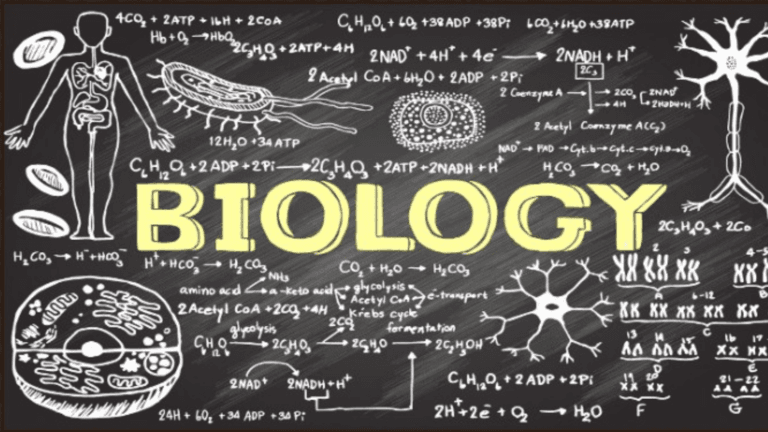Knowing about the virus completely Here

In the education world, especially your biology as a student may hear about viruses, but you need to learn what a virus is, and this is an explanation. About the virus. Which is taken from biology books for high school class X and MA, just to be clear, please read the following language below.
A few years after Avery's discovery, a lot of evidence appeared that DNA was genetic material in some organisms. The strongest evidence was obtained from the research on the virus. In 1952, Alfred Hershey and Martha Chase did some experiments on bacteriophage (or Fag) - virus that attacked bacteria.
Most viruses carry about 50 genes inside the protein sheath, even though some viruses only have three genes and some are 300 genes. Virus is the cause of some disease in humans, animals or plants.
He creates whatever He wills. Biotics can metabolize between nutrients, synthesis, excretion, reproduction, regulation, response to stimuli. As for the aluminum can't metabolize.
The virus by scientists is said to be an inanimate object, if the virus is beyond living cells. However, if a virus gets its place in living cells / organisms, it will show activity like living cells, which is able to reproduce so that it can multiply. So a virus can be categorized as a transition between inanimate objects and living things.
History of the Virus.
Ever since Anthony Van Leuwenhoek (1632 - 1723) found a microscope, the perception of microorganisms began to grow. That development is accelerating as it finds its electron microscope.
In 1882 A. Meyer got a disease that attacked tobacco plants, marked the leaves in the yellow spots. A. Meyer tried to extract infected leaves and spray them into healthy tobacco leaves, but healthy leaves could have escaped the disease.
By using a filter that can filter bacteria, D. Ivanowsky did a festering of tobacco plants and then the result was smeared on healthy plant leaves, and it turned healthy plants infected as well. In their conclusion, the organisms that attacked the tobacco plant were very small-sized pathogens / chemicals produced by bacteria and escaped from filtering.
In 1987 M.Bejerink, Dutch citizens discovered the fact that an organism that attacks tobacco can't grow inside the medium of bacteria and doesn't die even if it's put into alcohol. Bejerink concluded that the orgynism that attacked the tobacco was very small that could only live in the creatures he attacked.
In 1935, Windell Stanley of the U.S. successfully crystallized the organism that attacked the tobacco plant and named it TMV.
Virus Understanding
Virus is a pathogen microorganism that can only replicate inside cells because they don't have the cellular equipment to reproduce themselves. All life-forms can be infected by viruses, from animals, plants, to bacteria and archaetals. For virus terms are usually used to call the type of virus that infects the cells of eukaryota, while viruses that infect the prokaryota cells are known as bacteriophages. The existence of the virus was first known through the scientific text of Dmitri Ivanovsky in 1892 which deciphered the nonbacterial pathogen that infected tobacco plants and the discovery of mosaic tobacco virus by Martino Bejerinck in 1898. Until 2019, over 6,000 virus species had been described in detail, from a total of millions of different types of viruses in the environment. Virus was found in almost every ecosystem on Earth and is the most abundant biological entity. Science that studies viruses is known as virology, a subspecialization of microbiology.
Source: Wikipedia
Visual description.
And this would explain what the virus is like, one of which is the following:
- It has no cellular shape.
- Size between (20-300) millimicrons.
- It only has one kind of nucleic acid, which is ADN or an ARN.
- Forged in habland or crystal with varied forms; oval, elongated, siindris, boxes and so on.
- The body is head-lined, shrouded skin containing ADN or ARN alone and tail fibre.
For example we learned is morphology and the structure of Bakteriophage, which is a virus capable of attacking the Escherichia coli bacteria.
Virus Sections
That the virus turns out to have several parts of it, the head, the body, and the tail, for the full explanation about the parts of the virus are as follows:

Virus Image
1. Virus Head
This section is wrapped in a protein sheath called the capsid, as the body-making virus. Capsid is an identical monomer which consists of polypeptide chains.
2. Virus Content
The body of a virus is made up of genetic material or molecular carrier properties that can be passed down as ADN or ARN alone. The virus inside is ADN among other things:
- Papova virus,
- Herpes virus,
- Adeno virus,
- Pox virus.
As for his body which contained ARN among others:
- Paramyxo virus,
- Rhabdo virus,
- Reovirus,
- Picorna virus,
- Toga virus.
Inside, viruses don't have cell organells-- like mitochondria, ribosoms and so on.
3. Virus Tail Section
Tails are a tool for contact with the body of the organism he attacked. Tails are made up of clogged tubes equipped with fibers. Virus forms vary, like the image on the side.
Conclusion
Now, the conclusion is that the virus that we know about before might be used to hear it, but the above explanation explains in detail about the virus from starting the history of the virus to the form of the virus. Maybe that's all this talk is, hopefully the article above can be useful to the readers who are learning to understand Biology.. Thank you.





